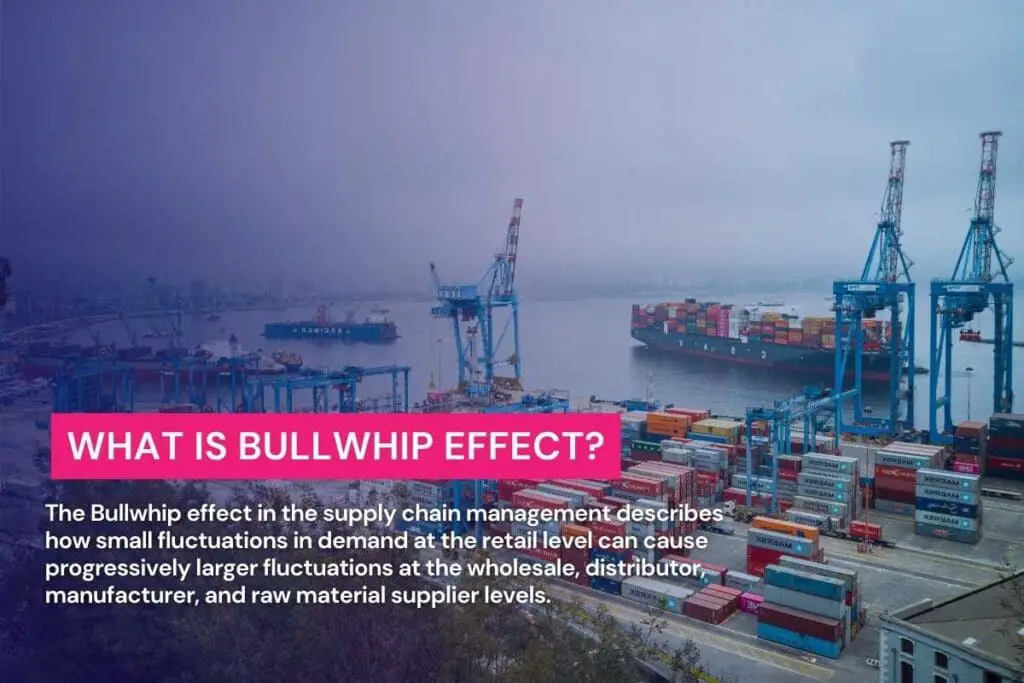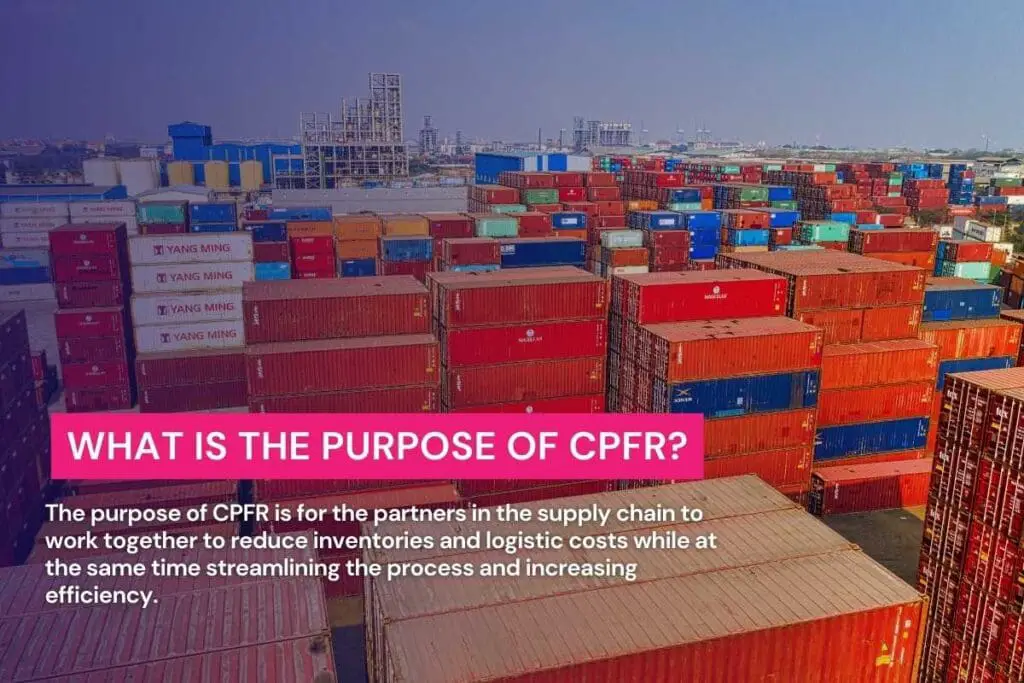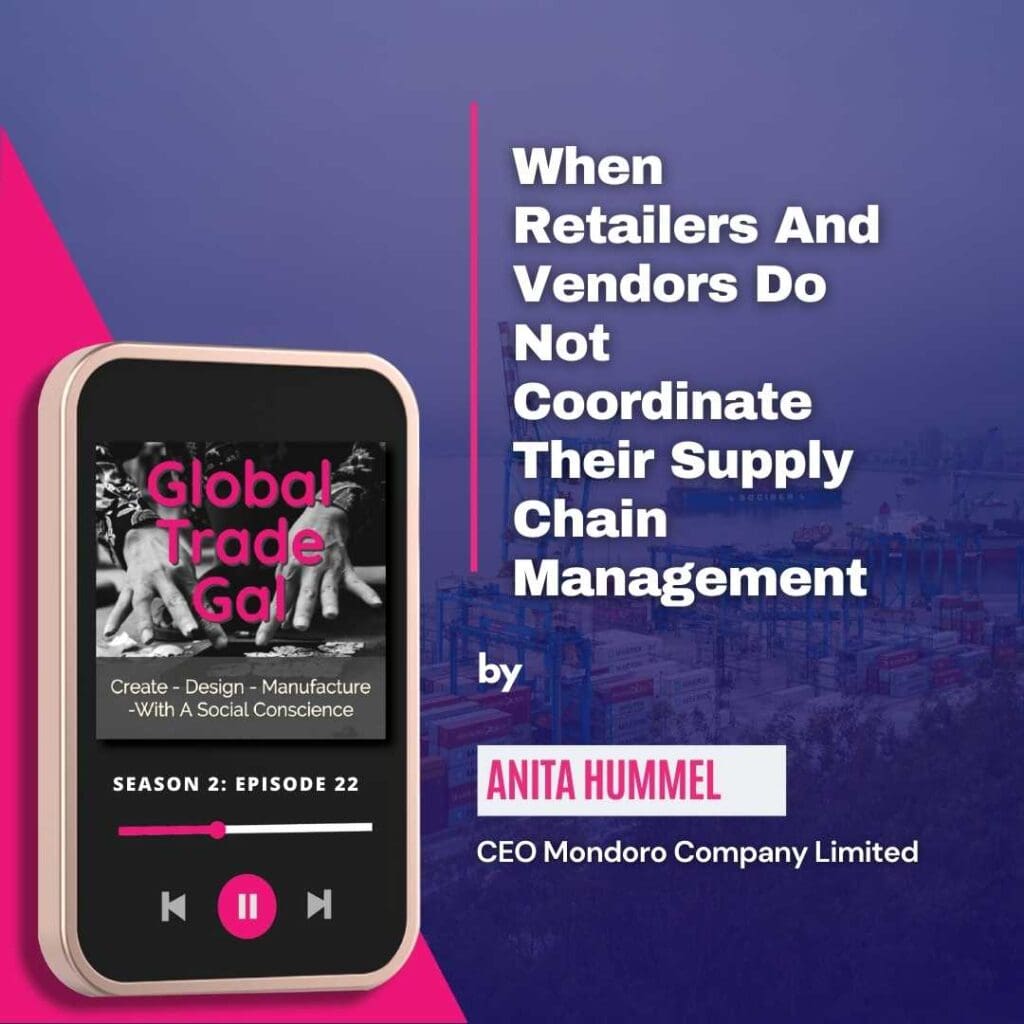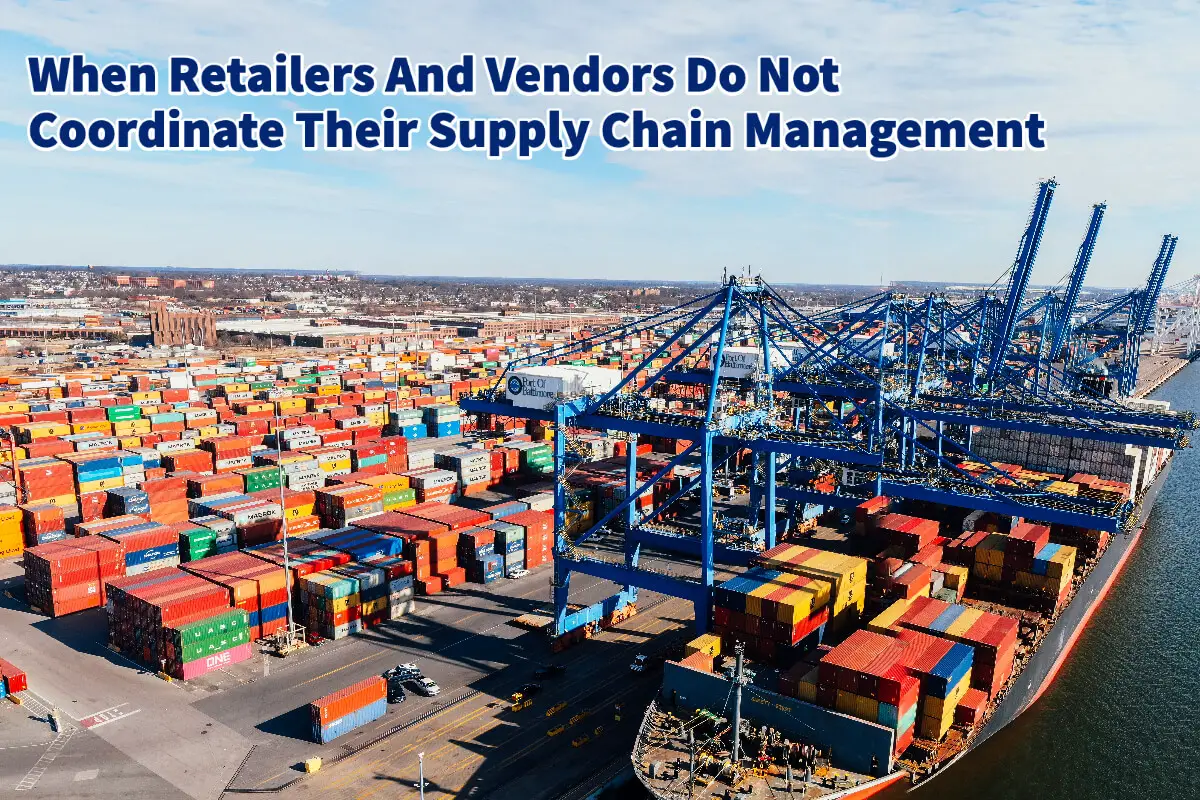Retailers and vendors must find ways to coordinate their supply chain management. If they do not do this, it can mean a loss for both the vendors and retailers.
When retailers and vendors do not coordinate their supply chain management, there can be chaos in the supply chain that can affect everyone. What happens in one part of the supply chain can have a massive impact on another; this is known as the Bullwhip Effect. Cooperation with programs like CPFR, vendors, and retailers better coordinate their activities.
Retailers And Vendors And Supply Chain Management
Today the Global Supply Chain is very complex. Recently we have seen that a bottleneck in one area can affect other areas of the supply chain. The COVID crisis’s impact on the world has continued to cause issues for the global supply chain.
If a retailer does not have products to sell, they cannot sell the goods. But at the same time, if they have too many products to sell, it can cost them money and, in some cases, cause them to lose profits and go out of business. Stock and inventory are two very tricky aspects of any supply chain management.
Too much or too little inventory can cause the retailer and vendor losses. This is why a retailer and vendor are actually in this together as stakeholders.
The Bullwhip effect can happen when vendors and retailers do not coordinate their efforts.
The Bullwhip Effect And The Supply Chain And Why It Matters

The Bullwhip Effect in the supply chain management describes how small fluctuations in demand at the retail level can cause progressively more significant fluctuations at the wholesale, distributor, manufacturer, and raw material supplier levels.
The Bullwhip is from the literal cracking of a whip or the physics involved in cracking a whip. The person who holds the whip snaps it with their wrist in minimal movements, but the slight movement of the wrist can cause a wave or pattern that amplifies the whip.
This same kind of phenomenon happens in the supply chain. A slight movement in one part of the supply chain can hugely impact another part of the supply chain.
One of the ways Bullwhip can happen is when retailers and vendors do not communicate and work together within the supply chain.
Retailers And Vendors And Supply Chain Management Coordination
The problem of retailers and vendors working efficiently in the supply chain has long been an issue. The truth is that dependencies between the retailers and vendors can cause the bullwhip effect or supply chain issues.
Here are some of the ways that retailers, wholesalers, and vendors are linked together:
- Leadtime issues such as manufacturing delays can have a direct impact on sales.
- Raw materials costs or supply can hurt manufacturing and cause delays.
- Lack of communication and alignment between the stakeholders.
- Over or under estimating the demand for a product.
- Inaccurate forecasting for a product, i.e., product not selling or product selling out.
These issues can be costly to all involved and require that retailers and vendors highly coordinate their activities for the benefit of all.
One way this has been done within the supply chain is through what is known as CPFR.
CPFR – Collaborative Planning, Forecasting And Replenishment, And Supply Chain Management
There is a term known in supply chain management as CPFR. CPFR stands for Collaborative Planning, Forecasting, and Replenishment (CPFR). The practice of CPFR is about the global trading partners working together to help plan key supply chain activities for the benefit of all.
CPFR is usually based upon software that global partners will share to help them make vital decisions that ensure the supply chain runs smoothly. The retailer shares with the vendor about the product sales so the vendors can also adequately prepare for the retailer’s production needs.
In other words, CPFR means that retailers, wholesalers, and vendors will work together to help ensure the supply chain runs efficiently and is mutually beneficial for all.
The CPFR planning can include areas such as:
- Business Planning
- Sales Forecasting
- Replenishment of Raw Materials and the Finished goods

The purpose of CPFR is for the partners in the supply chain to work together to reduce inventories and logistic costs while at the same time streamlining the process and increasing efficiency. Part of this process includes improved communication between the supply chain partners and sharing vital information so that each party can work to make the correct decisions.
This can include things like if the vendors know an order is coming, they would be willing to purchase the raw materials needed for their production. The retailer would be willing to give the vendor’s products a prime space and location to ensure the products will sell.
CPFR is not as novel as it once was. Now every company is trying to find a way to bring the vendors and retailers together to have an efficient and effective supply chain. But it is worth noting where and how this all started with a partnership between P & G and Walmart.

Listen To Our Podcast When Retailers And Vendors Do Not Coordinate Their Supply Chain Management below or by clicking here.
Proctor And Gamble (P & G – The Vendor) And Walmart (The Retailer) Supply Chain Partnership Study
One of the major case studies that most Supply Chains courses now study is the case study from the 1980s between Proctor & Gamble (P & G) and Walmart. The two worked together, particularly P & G, to find software and other solution to bring P & G (as the vendor) and Walmart (as the retailer) closer together.
The cooperation between P & G has been so successful that now it is the stuff that legends of supply chain management are made of. Walmart and P & G saw that it was mutually beneficial for them to share what would have been considered confidential information and to share that information so that each party could make better decisions.
The two companies worked together to build a relationship that had a foundation for sharing the data they each needed to make the best product decisions and ensure that their supply chain was coordinated and worked together.
Through their coordination, P & G and Walmart led the way and showed us that coordination in the supply chain is essential to everyone. When two companies who may have been on opposing sides can come together to collaborate and work together, a great partnership can be formed.
We learn from P & G and Walmart’s ability to work together that the most efficient and effective supply chain management is when both the retailer and vendor will work together to coordinate their supply chain activities for the mutual benefit of all.
If you are interested in seeing how Mondoro can help you with your strategic sourcing and be part of your supply chain – we would love to talk to you to see how we can help you.
Find out more about how Mondoro can help you create, develop, and manufacture excellent home decor and home furniture products – don’t hesitate to contact me, Anita. Check out my email by clicking here or become a part of our community and join our newsletter by clicking here.
Mondoro gives out a FREE Lookbook to anyone interested. You can receive a copy of our latest Lookbook by clicking here.
Listen to our Podcast called Global Trade Gal. You can find it on all major podcast platforms. Try out to listen to one of our podcasts by clicking here.
Subscribe to our Mondoro Company Limited YouTube Channel filled with great videos and information by clicking here.
Related Content
An Efficient Supply Chain And How To Improve It
An efficient supply chain is a supply chain that functions and operates and does so at the most optimal level possible. An efficient supply chain can excel at getting products or services ordered, shipped, and to the end purchaser in the most efficient way possible.
You can discover more by reading An Efficient Supply Chain And How To Improve It by clicking here.
How Do Information Systems Support The Supply Chain?
Information systems and the information we can obtain are critical in any supply chain; we must have and use accurate information to make correct decisions.
You can discover more by reading How Do Information Systems Support The Supply Chain? by clicking here.
What Is The Difference Between Supply Chain Management and Logistics?
Supply chain management is about the collaboration and partnerships to get the goods from raw material to the end consumer; it is about the partnerships and alliances within this process. Logistics is one part of supply chain management; logistics involves moving goods from one place to another.
To learn more about loading a dry shipping container, you can read our blog on What Is The Difference Between Supply Chain Management and Logistics? by clicking here.


